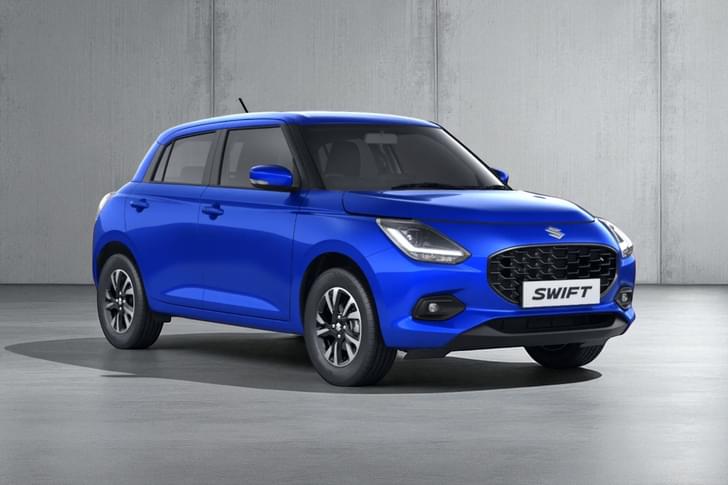Mercedes-Benz recently announced that it has sold over 1,000 cars under its new ‘Retail of the Future’ strategy, which is all about selling vehicles directly to customers. While the sales model might be working well for the luxury marque, on the other end of the spectrum, Maruti Suzuki is in no hurry to break convention. “At this moment, for a large volume player, it's a little difficult to go purely with a direct-to-customer sales model,” Shashank Srivastava, executive director, Sales and Marketing, Maruti Suzuki India, told Autocar India during a recent Reliance General Insurance ‘Brobot Interact’ panel discussion on the ‘Future of Retail’ .
- Maruti has sales outlets in 3,000 cities with stock capacity of 1,50,000 units
- Managing and owning the complete stock of vehicles is a challenge
- Direct-to-customer model leaves no scope for haggling over prices
The problems with scale
Under its new strategy, Mercedes manages the inventory of all of its cars throughout the country and bills customers directly, with its dealership network only responsible for test drives and vehicle deliveries. The traditional model, on the other hand, involves companies, like Maruti, selling cars to their authorised dealers, who in turn retail them to customers.
“We have factories and inventories from where vehicles are sent to dealers who stock them for sale to consumers in different parts of the country,” explained Srivastava.
He continued, “Our stocks are about 1,50,000 units – 1,25,000 with the dealers and around 25,000 with us. Generally speaking, an acre of land stores 200 vehicles. So this [1,50,000 unit stock] probably requires 750 acres of storage space alone for us to even start thinking of delivering vehicles.” Taking charge of all of this inventory under a direct-to-customer model, then, could be a challenging task.
However, Martin Schwenk, MD and CEO, Mercedes-Benz India, who was also a part of the panel discussion, feels otherwise. “We also use the storage location of our dealers and it's only a question of remunerating them. So, the logistics is not a problem. You can do it, more or less, similar to today,” he said.
But he did admit, “You need a lot of cash to take over all the stocks and carry inventories. That is a concern.” For reference, Mercedes sells about 1,000 cars each month on an average. While Maruti operates in the budget end of the market, it does manage over 1,00,000 units of average monthly sales.
“We have our outlets in almost 3,000 cities,” commented Maruti’s Srivastava. On the other hand, Mercedes, with the largest footprint in the country for a luxury carmaker, had sales outlets in 48 cities till September 2020.
Ironically, then, scale is the biggest challenge for Maruti to embrace the direct-to-customer model.
Managing shipping costs
We’ve already had a detailed look at how Mercedes’ direct-to-customer model is set to impact buyers. With Mercedes in charge of the nation-wide inventory, individual vehicles can be shipped not only from its factory, but also from nearby dealerships.
Commenting on the point, Srivastava said that luxury, but small volume, carmakers could afford transporting a single unit. “However, we don't do that. We send vehicles in lots of eight to 10 so that transportation costs can be reduced,” he added.
Providing a better purchase experience
For all the reasons why the direct-to-customer strategy won't work out for Maruti, Srivastava did acknowledge some benefits of the approach. “There is no price haggling and there is greater [customer] confidence. Maybe even the dealership experience is better.”
Mercedes now centrally sets the prices and discounts on all of its vehicles throughout the country. While it does mean that buyers can no longer negotiate with dealers, it ensures a uniform ex-showroom price across all states.
Elaborating on this, Schwenk said, “I have done a couple of dealer visits and have also spoken to customers. Buyers clearly see the benefit of not having to haggle and having a price which is transparently presented to them. So I can really see a huge benefit there.”
“The core differential is that the sales rep sells the product, not the price. And that is something which creates a completely different customer experience over time,” he added.
Though large volume carmakers are yet to be sold on the idea of a direct-to-customer approach, Srivastava believes that they can adopt an intermediate route. “We can have regional stockyards, which can reduce turnaround times. For instance, Maruti has six stockyards – Gurugram (capacity: 6,000 units), Manesar (25,000 units), Gujarat (25,000 units), Bangalore (14,000 units), Siliguri (3,000 units) and Nagpur (4,000 units). We currently have a capacity of over 77,000 units,” he said.
Would you like to see Maruti Suzuki sell vehicles directly to customers? Let us know in the comments below.






































